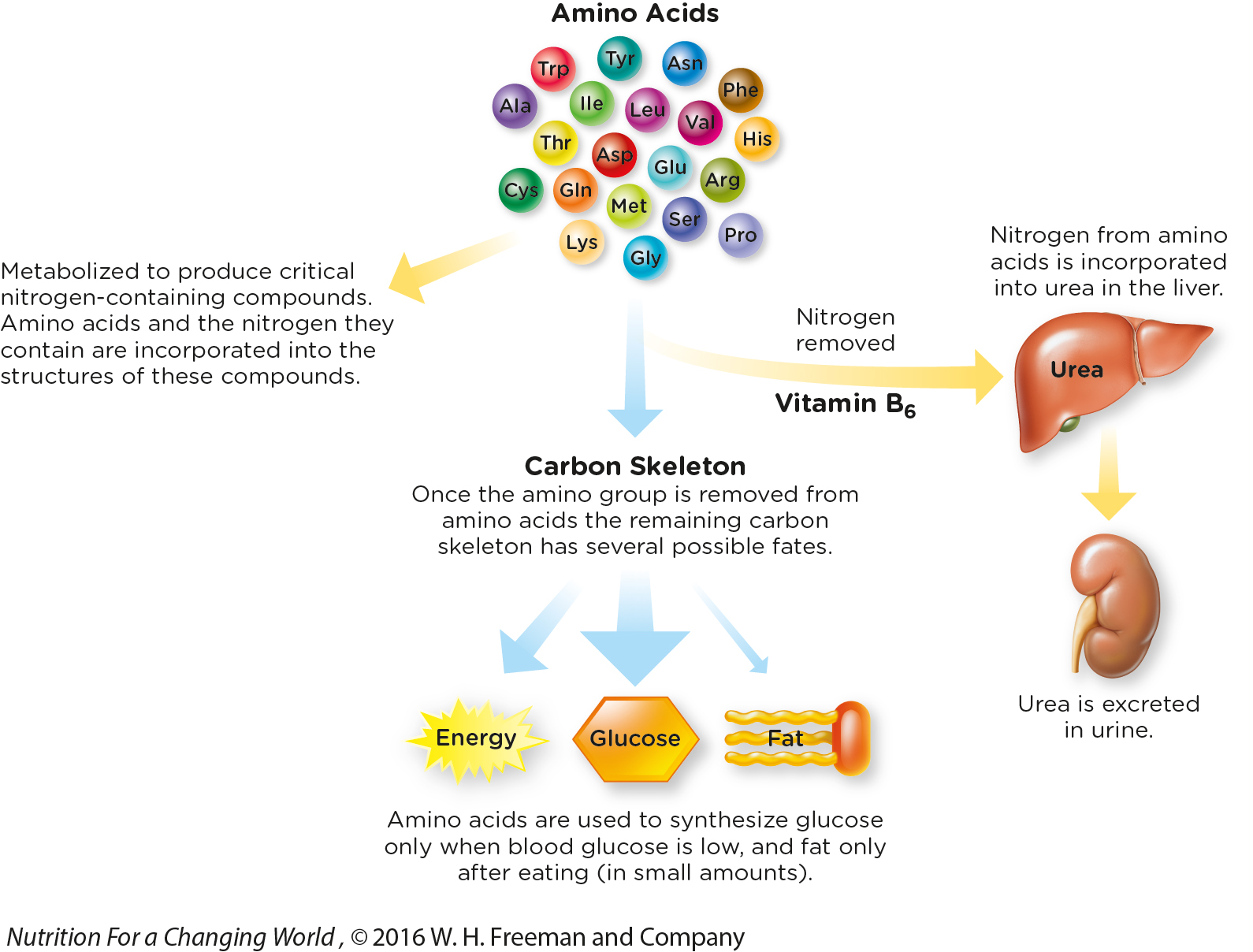AMINO ACID METABOLISM
Amino acids are supplied by our diet as well as by the continual breakdown of body proteins. Although most amino acids in the body are used to synthesize proteins, they are also used to synthesize a variety of other compounds. In many cases amino acid metabolism requires that they first be stripped of their amino group, and the remaining carbon skeleton has several possible fates.
The liver is the major site of amino acid metabolism in the body. In many cases, the amino group is removed from amino acids and then transferred to other compounds in reactions that require a coenzyme (pyridoxal phosphate) synthesized from vitamin B6. The transfer of the amino group allows nonessential amino acids to be synthesized. It also prevents the release of large quantities of the amino group, which would accumulate in the body as ammonia and is potentially toxic. Instead, the transfer of the amino group allows the liver to carefully control the release of the amino group so that the ammonia can be effectively converted into the less-
Once the amino group has been removed the remaining carbon skeleton can be used to synthesize glucose when blood glucose is low, or fatty acids when excess energy is consumed. To a lesser degree it can also be metabolized directly as a source of energy. When used as a direct energy source the carbon skeletons from various amino acids enter the citric acid cycle at several different points in the cycle where they are oxidized to produce reduced coenzymes. As we have seen with the oxidation of pyruvate and fatty acids, the majority of ATP is then produced once the high-

Amino Acid Metabolism Amino acids are metabolized to produce many important compounds. When used as a source of energy or to synthesize glucose or fat, the first step in their metabolism is to remove the amino group and transfer it to another chemical compound in a reaction requiring a coenzyme synthesized from vitamin B6.